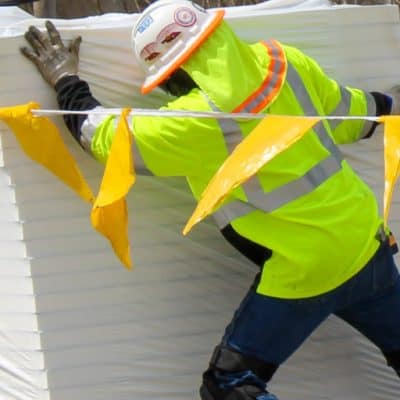
Personal protective equipment safety talk
To ensure you are using the proper equipment, assess the work you will be performing and what potential hazards exist. Examples of workplace hazards include moving objects, electric connections, high noise levels, dust or the presence of chemicals. The next step is selecting the appropriate PPE based on the risks identified with the job and the environment in which you will be performing it. PPE only works when it is right for the job and the environment.
Types of PPE include:
Clothing and footwear: The importance of choosing proper protective clothing is often overlooked and its benefits cannot be underestimated. This form of PPE covers the largest portion of your body and can help protect you from a variety of workplace hazards. Examples of protective clothing are long sleeve non-synthetic shirt and pants, reflective vests, coveralls, thermal and cold protective clothing. Selecting the appropriate footwear can protect you from stepping on sharp objects, hazardous substances, falling objects and slips and falls. It is important that you select the appropriate footwear for the job that you are performing and the environment.
Hand protection: Gloves are an inexpensive and simple way to guard against many hazards, from chemicals to cuts and punctures. Hand protection comes in an assortment of styles, materials and sizes that can even be customized for a specific industry or hazard. Fit is also an important consideration because if gloves are too large, they can impair the dexterity of your hands or cause you to lose your grip, potentially causing an accident.
Head and eye protection: Hard hats must be worn when overhead hazard conditions are present such as falling objects. Using proper eye protection can help prevent injury and even blindness. Safety glasses, goggles or shields protect your eyes from chemicals, flying fragments, dust, sand, dirt and other environmental hazards.
Hearing protection: Reducing the noise level in your work environment to a safe level is obviously the most effective method to prevent hearing loss. However, lowering the noise level is not always possible, in these instances ear plugs, or earmuffs should be worn to protect hearing.
Respirators: A suitable NIOSH approved respirator should be selected and used based on the job being done. Annual fit testing and medical evaluation should be performed as well. Assistance with selection of appropriate PPE can be found on the safety data sheet (SDS) for the chemical being used. Take appropriate measures to clean and store equipment when not in use. Inspect all components of the respirator before use.
